Various Breast Shapes
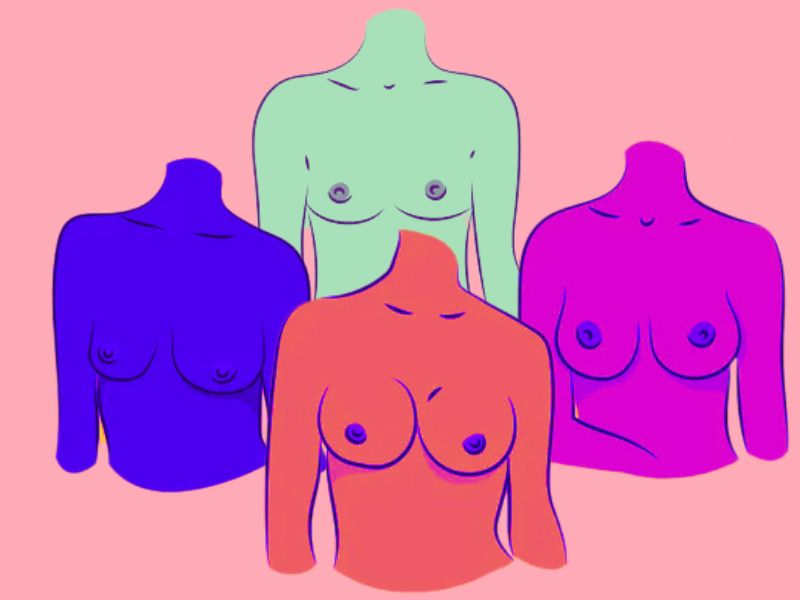
What to know about breast shapes?
Breast shapes among women are different and all the shapes are good and should be appreciated. Knowing your breast shape makes it easier for you to make the right decisions on the kind of bras to wear, the type of clothing to wear and even your breast health. In this guide, you will read the various aspects in relation to breast shapes, factors that may affect them and the signs that indicate that one might need to seek medical attention.
What are the most common breast shapes?
Breasts are exactly like our fingerprint; there can be no two similar ones out there. As a matter of fact, for those who want either to get more knowledge about one's own body or for those who are simply interested in different forms, it is useful to know about breast shapes. Here are some of the most frequent types of breasts, and why each is unique.
Round breasts
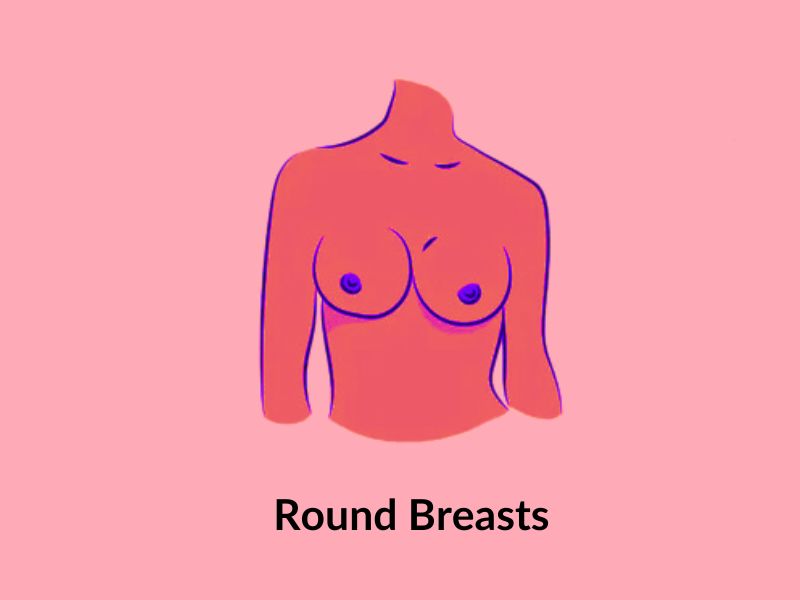
Round breasts are those which are of equal size at the upper pole and the lower pole and form a circular shape. This is generally thought of as one of the most well-proportioned breast shapes and is generally not hard to cup with numerous sort of bras.
Teardrop breasts
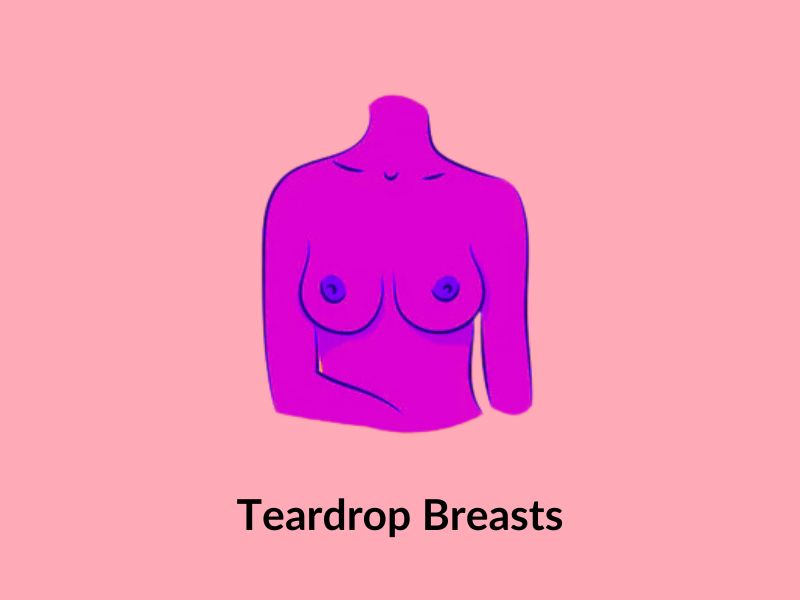
Teardrop breasts are larger at the base and taper slightly to be smaller at the apex giving a teardrop shape. This shape gives a gradual incline and is therefore regarded as natural and smooth in appearance.
Asymmetrical breasts
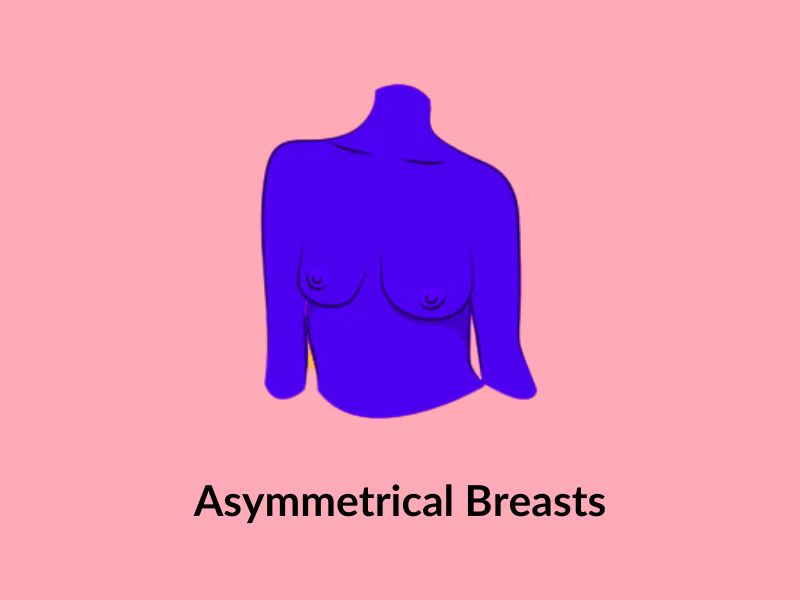
A number of women have breast irregularities, where one breast is slightly bigger or has a different contour to the other. This actually varies and is part of the normal development process of the human body and is only noticeable if it is drastically different.
Athletic breasts
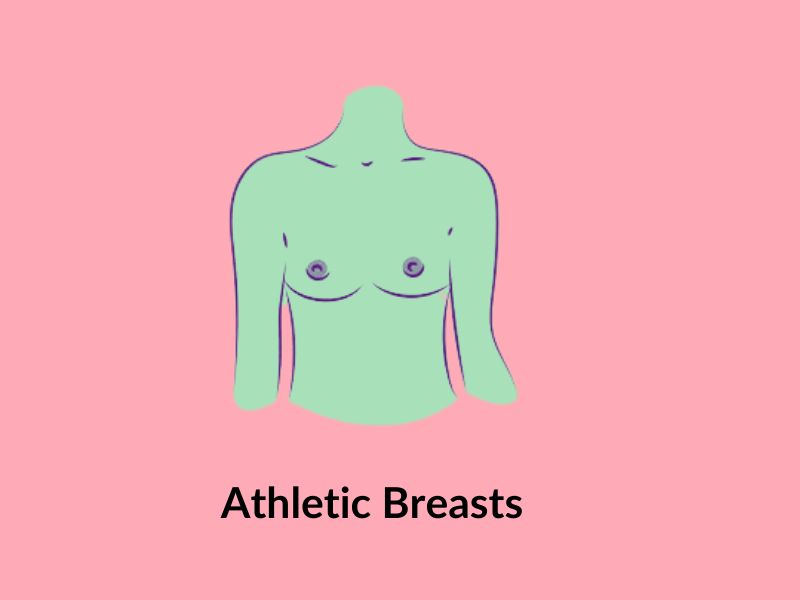
Athletic breasts are normally larger in size, have very little glandular tissue hence are more muscular in texture. This shape is usually observed in women with a slightly athletic body build.
Bell-shaped breasts
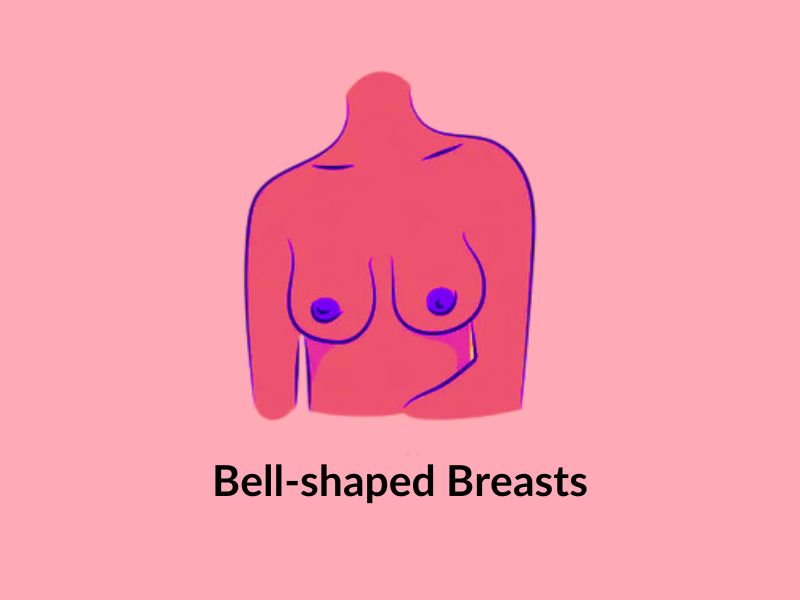
U-shaped breasts are narrow at the top and round at the base and is shaped like the letter U. This shape is commonly observed in women with full chest endowment and normally calls for a more supportive kind of a bra.
East west breasts
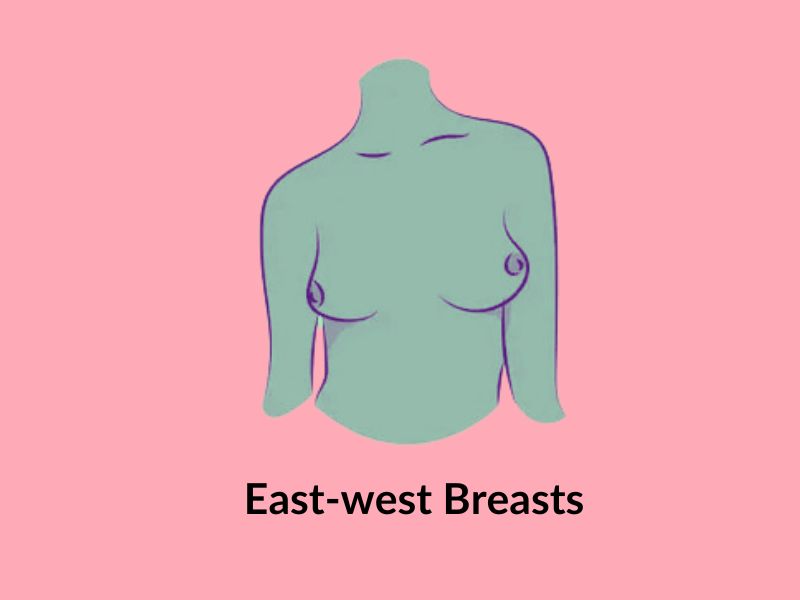
East West breasts are positioned outwards from the middle of the chest and nipples may even be directed in opposite positions. This shape will give the appearance of a wider chest and thus the t-shirt bra is best worn if one wants a centered look.
Slender breasts
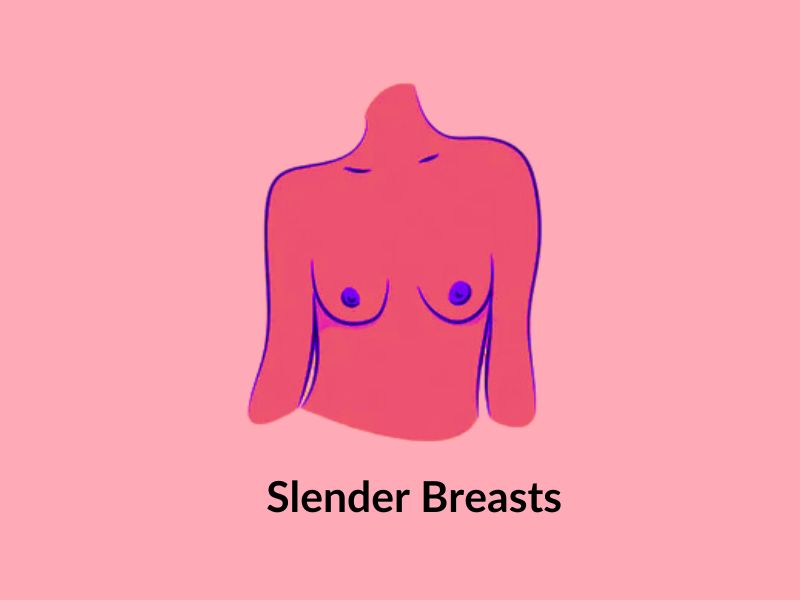
It has less fullness and longer in length and narrow in width than the fuller breasts are. This shape is quite common among women who have small busts and they would benefit from under garments that give them extra volume and support.
Relaxed breasts
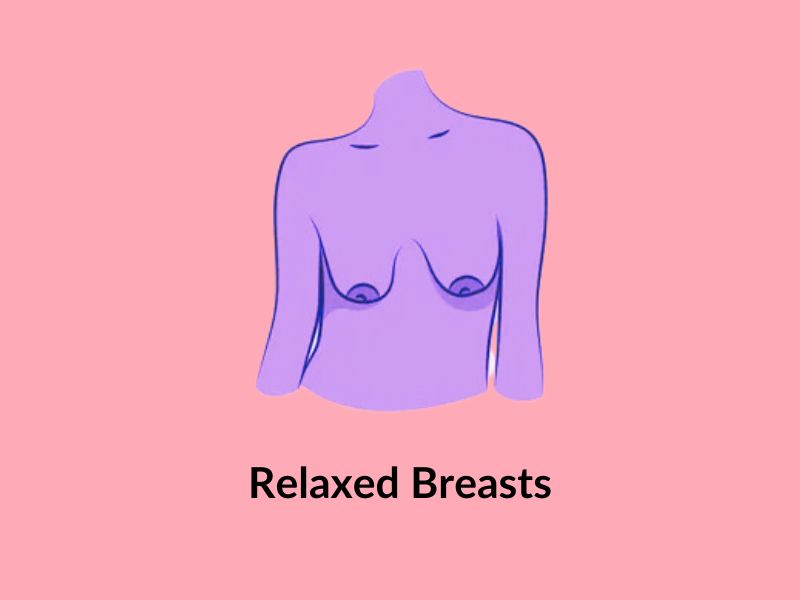
Free hanging or pendulous breasts are those that have lost their elasticity and firmness, nipples usually pointing downwards. This shape can be due to aging or after child bearing and normally needs bras that offer good support and uplift.
Conical breasts
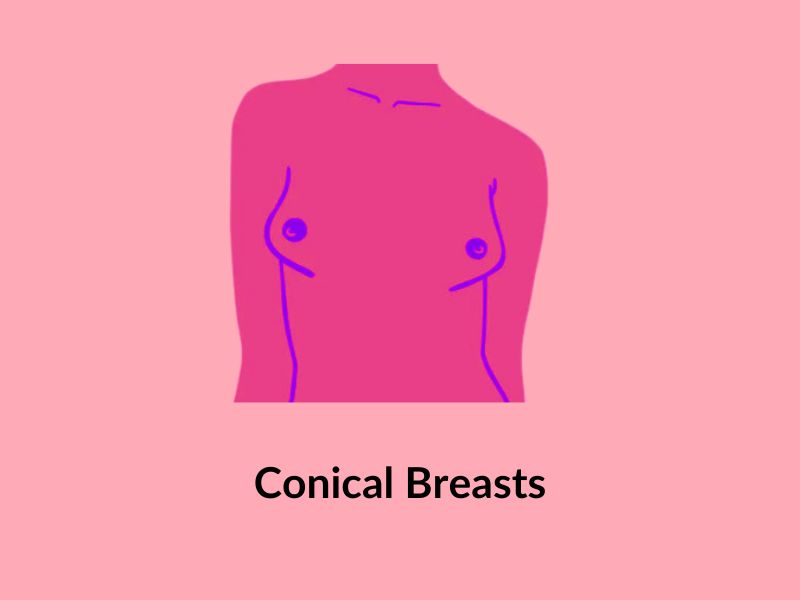
Conical breasts are less spherical than round and usually have a more narrow base. This shape is typical of smaller breasted ladies and such a shape may need additional bras that make the bust line appear fuller.
Side set breasts
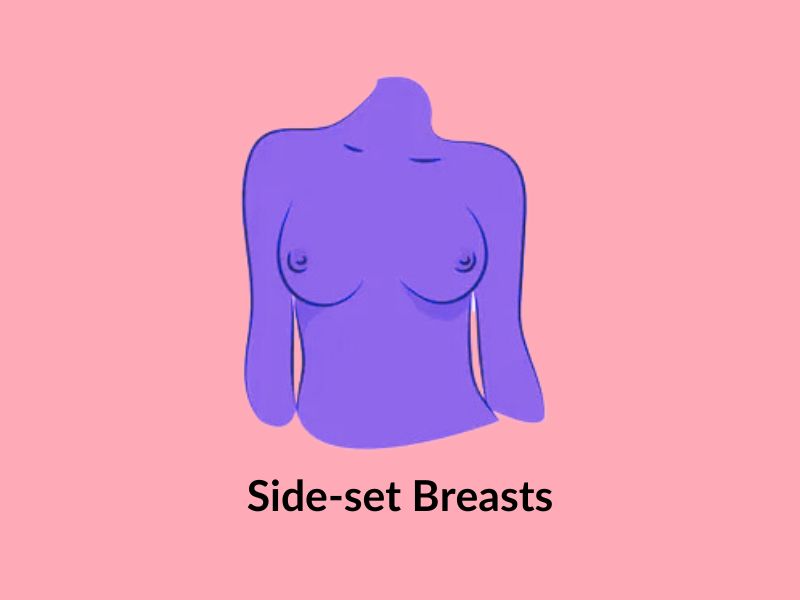
Side-set breasts are a type of breast that has a prominent space between the breasts and rests on the rib cage in this way. They usually have a full structure and may resemble round breasts. In this type of breasts, the nipples are usually located in the centre and sagging is minimal. The breasts are positioned outwards and the distance between them is wider than other breast types.
Close set breasts
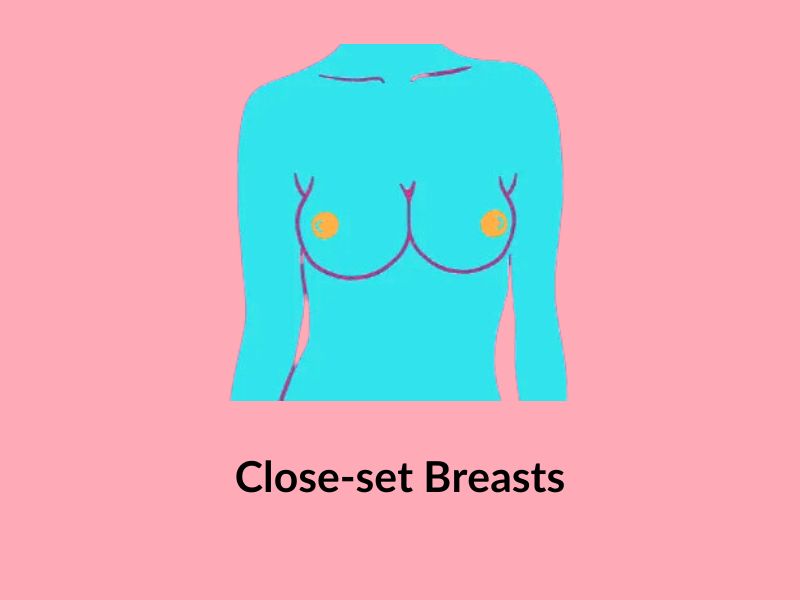
Close set breasts are a type of breast with little or no space between the breasts. This type of breast is positioned closer to the centre of the rib cage and the distance between the underarm and the breast is greater than other breast types.
When should I worry about asymmetrical breasts?
Have you ever realised that one breast is slightly different from the other? You're not alone. In fact, Breast asymmetry is often caused by natural variations in breast development, where one breast grows slightly more than the other. This is completely normal and nothing to worry about. Hormonal fluctuations due to puberty or at any other stage of life can also be a reason for this difference.
However, if you have realized that one breast is a bit different from the other or that the difference is getting worse, then you must take a second look. Research has indicated that women with developed or enlarging breast asymmetry may be at a slightly higher risk of developing breast cancer. (Studies)
Another study identified that even breast asymmetry could be used as another marker in ascertaining breast cancer risk. Of course, this doesn't meant that you should panic; however, it is highly recommended to continue with the consistent mammogram and to address the changes with the doctor. They can inform you if more tests could be required to know that all is well. So, be informed and always stay ahead of the game!
What about areola?
Have you ever asked yourself, why your areola has this or that pigmentation? It might not be large - but it has so much personality and function it remains a defining part of your breast.
It may be brown, black or pink in color and can differ in size depending by genetics and hormones. Areolae range in size from 2 to 6 centimeters in diameter, although the diameter expands during pregnancy and lactation. The color can also change during these times, and this makes the breasts distinct.
Surprisingly, size and color of areola influences the visual perception of breast shape: the bigger and darker the areolae, the rounder and fuller the breasts will look. The tiny lumps right on the area of your areola that you never paid attention to, the Montgomery glands, are there for this very purpose, to secrete natural oils to your nipples. Isn't it wonderful that this tiny region contributes so much in terms of the appearance and productivity of one's body.
What about nipples?
Like the shape and size of your breast as well as the size and position of your areolae, nipples are unique structures that are as different as the person's fingerprints. There are differences in their shape, size, and color - some are rather lively, others are more low profile. It is therefore important to have an insight of the different types of nipples that are part of the human body. Well, here is the list of the main types of nipples, and some peculiarities that make them unique.
Protruding nipples
Among these the most familiar perhaps are the nipples that stick outwards. These nipples are relatively raised from the areola without any touch applied to them. They're typically more sensitive and can easily be revealed through clothing, which is why they are the quintessential nipple - the first thing that comes to mind when one hears the word.
Flat nipples
Flat nipples do not protrude from the skin of the areola but rather remain recessed and only raise up when touched or when the person is excited. They appear less apparent, but they are entirely regular and typical. Some women complain that their nipples are not protruding as they used to be, or have become flat, but this normally changes during lactation.
Inverted nipples
Inverted nipples are the ones that are not protruding but rather recede, they are not pronounced on the surface of the skin. This occurs to a minor extent where the nipples are slightly inverted, or to a major extent where the nipples are inverted to a large extent. Most of the time, inverted nipples are not a problem, but if some of them have inverted suddenly or if there is any worry at all, it is healthy to consult.
Puffy nipples
The symptoms of puffy nipples include the nipple and the areola being enlarged and appearing to be extruded. This type is commonly seen in young women and men, particularly at the onset of adolescence, and leaves the breast with a soft roundish appearance. It is also noticed in those with a little more breast tissue as compared to the flat chested ladies.
Unilateral nipples
Asymmetric nipples are where one nipple is of a different type to the other one. For instance, it is possible to have one of your nipples sticking out while the other is pulled inwards. This is perfectly natural and simply one more way that your body is different from the next person's.
Supernumerary nipples
Extra nipples or supernumerary nipples are an interesting trait that some people possess and are quite possibly unaware of. The Teats can be located anywhere along the “Milk Line”, which is drawn from the armpit to the groin; they usually look like small moles or birth marks. They are entirely benign and occur much more frequently than one might guess.
Hairy nipples
It's quite perfectly natural to have hair surrounding your nipples. Some have it in larger quantity than others; it can be because of hormonal changes or heredity. Although nipple dimpling isn't a “type” of nipple, it's something that one might find and thus is important to mention.
What can affect breast shape?
Just like every other part of your body, breast shape is influenced by a mix of factors, some of which you can control and others you can't. Here is a list of what can impact the shape of your breasts so that you know why they get to change their shape and what makes them stay the way they are:
Genetics
Breast shape and size depend on certain inherited factors which are the genes of an individual. In the same way, if women in your family have a certain kind of shaped breasts, then you are likely to be a victim of the same fate as well. Genetics also determines skin firmness and how a woman's breasts may shift over time.
Hormones
Some of the causes of breast shape changes include; puberty, menstruation, pregnancy, and menopause and all of which are related to hormonal changes. Estrogen in particular makes the breast tissue to form and this causes changes in size and shape of the breast throughout ones life.
Age
Hormonal changes, gravity and loss of elasticity that occurs as a person ages causes the ligaments supporting the breasts to stretch. This is a natural process of aging and might make your breasts look different, less perky and possibly even smaller.
Pregnancy and breastfeeding
The other change that you are likely to experience during pregnancy is that your breast size and sensitivity increase. When they are breastfeeding, some women realize that their breasts become softer or even start to sag and change their shape.
Weight fluctuations
Weight fluctuations, therefore, can alter the size and shape of the breasts since they are primarily made of fat. Large breast can become less in volume and may droop due to significant weight loss while they may become bigger due to weight gain.
Gravity
Gravity constantly tries to pull down your bust line and over time the ligaments stretch and cause them to sag, more so if you are a large busted lady. Wearing a supportive bra can however help to reverse this effect to some extent.
When to see a doctor
Breasts are unique body organs that vary with time and while most of the changes are progressive and natural, some are warning signs that should warrant a doctor's attendance. Of course, it is always crucial to recognize what to search for, then, the potential problems will be revealed.
New lumps or thickening: Any new lump or thickening of the breast skin or underarm area, especially if it is asymptomatic.
Sudden changes in size or shape: Breast lumps; the breast or both breasts may change in size or shape and may become swollen or reduced in size.
Nipple discharge: Breast milk, bloody or clear fluid coming from your nipples, you should consult a doctor immediately.
Skin changes: Dimpling, puckering, or any change in skin texture of the breast can be concerning; the skin may look like an orange peel.
Nipple inversion or changes: If a nipple of the breast becomes flat and pointed or if a previously normal nipple turns abnormally shaped or retracted, it is probably time for a doctor's visit.
Persistent pain: If this or any other dull or severe pain is felt in the breast and does not have any relation to the menstrual cycle, then it is advised to consult a doctor.
Redness or swelling: Any alteration in colour, temperature or size of the breast, particularly if these occur suddenly, may be indicative of an infection or some other complications.
 Turkish
Turkish